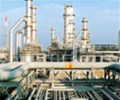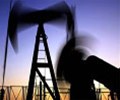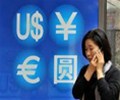Analysis: State of emergency plunges Japan’s Jan gasoline demand to 32-year low

Japan’s gasoline demand in January is estimated to have fallen to the lowest monthly level in 32 years due to the restrictive measures of the month-long state of emergency lockdown, but a severe cold spell hitting the country has propelled kerosene demand to jump 25% higher from a year ago.
It is unclear whether Japan’s gasoline demand will bounce back up in February, especially since there are talks the country will need to extend these state of emergency measures beyond Feb. 7, market sources told S&P Global Platts. Kerosene demand for heating purposes, on the other hand, is seen higher on the year in February.
Japan’s gasoline demand is estimated at 3.38 million kl, or 685,791 b/d, in January, down 10% year on year, while kerosene demand is estimated to have jumped 25% year on year to 2.65 million kiloliters, or 533,676 b/d, ENEOS, the country’s largest refiner, said on Jan. 28.
This puts gasoline demand at its lowest for the month since 1989, when domestic gasoline sales stood at 3.03 million kiloliters, according to data from the Ministry of Economy, Trade and Industry. Kerosene demand was last lower in 2019, when sales of the middle distillate stood at 2.63 million kiloliters.
The latest data released by METI Jan. 29 showed that Japan’s gasoline demand slid 2.4% from a year ago in December 2020, but rose 8% month on month to 866,914 b/d, while kerosene demand rose 7.3% year on year and surged 77.4% month on month to 507,361 b/d.
Emergency measures
Japan declared a month-long state of emergency, which subjects over 55%, or more than 130 million of its population to restrictive measures until Feb. 7, in a bid to curb the spread of COVID-19. This has been disruptive to the country’s ailing gasoline demand.
Japan’s gasoline demand fell sharply around the end of 2020 and the start of the new year after the government asked the public to refrain from going out during the holiday season, the Petroleum Association of Japan President Tsutomu Sugimori said on Jan. 21.
“Japan’s driving activity has declined after the declaration of state of emergency, with both the weekly data from PAJ and the mobility index pointing to weaker gasoline demand in January,” JY Lim, oil market adviser at S&P Global Platts Analytics, said.
Despite these restrictions, kerosene demand has not succumbed to the same fate as gasoline, as it has found support in Japan’s severe cold spells this winter.
“Kerosene demand picked up strongly over the past few weeks due to heating demand amid cold winter weather,” Lim said. “With warmer weather expected in February, kerosene demand is likely to ease further. As a result, we expect refinery run rates should soon begin to ease and enter a seasonal decline pattern.”
Japan’s crude throughput rebounded 1.7% on the week to 2.79 million b/d in the week of Jan. 17-23 and crude run rates having increased to 80.8% during the week, according to the latest PAJ data. Japan’s refinery runs hit the 80% mark for the first time in four weeks after it reached 80.6% in the week ended Dec. 26.
February outlook
In light of local media reports that Japan may extend the state of emergency measures, a Japanese refiner expects a 10%-12% year-on-year drop in gasoline demand in February, while also expecting kerosene demand to rise 3%-5% from a year ago given the cold weather outlook for northern Japan the next month.
With domestic gasoline demand in the doldrums, Japan’s gasoline exports are likely to remain high in February as refiners seek alternative homes for surplus barrels, industry sources said.
“Asian gasoline prices have recovered steadily in January,” one market source said. “So the incentive to export is there.”
As of Jan. 28, the Mean of Platts Singapore 92 RON gasoline, the most liquid gasoline benchmark in Asia, has averaged $55.18/b month-to-date, up from the average of $50.11/b in December and $43.62/b in November, Platts data showed.
The Japan Meteorological Agency’s latest month-long weather forecast released on Jan. 28 showed that Hokkaido in the north will experience temperatures which are below the 30-year average until Feb. 28.
Asian market participants also expect Japan’s healthy appetite for kerosene imports to continue in February in light of the cold weather outlook.
“What this would mean is heightened demand for kerosene in Japan as people will be more inclined to stay home, especially now with the state of emergency, and so more kerosene will be consumed for sure,” an Asian refining source, who is tracking heating demand in Northeast Asia, said.
“I think the peak winter season typically last until end-February. I think certain parts of North Asia, South Korea and even China are still experiencing cold spells,” the source said.
The FOB Singapore jet fuel/kerosene cash differential has remained firm as a result of the heightened kerosene demand, and was assessed at a discount of 23 cents/b to the Mean of Platts Singapore jet fuel/kerosene assessments on Jan. 28, recovering from a low year-to-date base of MOPS jet fuel/kerosene assessments minus 45 cents/b on Jan. 7, Platts data showed.
Source: Platts

 Hellenic Shipping News Worldwide Hellenic Shipping News Worldwide, Online Daily Newspaper on Hellenic and International Shipping
Hellenic Shipping News Worldwide Hellenic Shipping News Worldwide, Online Daily Newspaper on Hellenic and International Shipping























 PG-Software
PG-Software